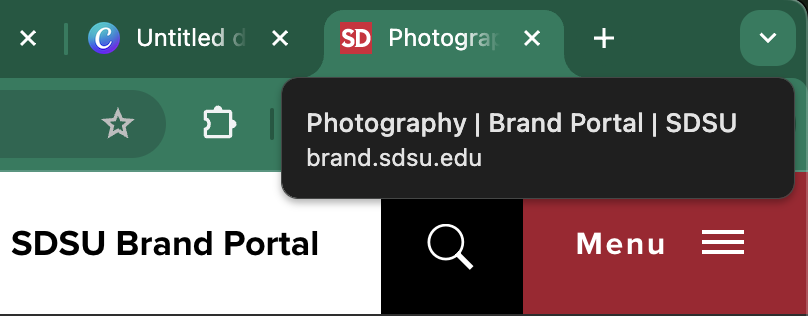SEO Basics
Search Engine Optimization
This is the title that is displayed at the top of a browser window and as the headline within search engine results.
- Page titles should be descriptive but concise, typically 50-60 characters. Longer titles will get cut off in search results.
- Ensure that your page titles are unique.

This is the description you will find for your page link on the search results. This is also the blurb you will see in link previews while social sharing.
- Meta Descriptions should be kept to 155-160 characters, longer descriptions may get cut off.
- The description should be concise, relevant and compelling with the goal of encouraging people to use the link.
- If the content gets out of synch with the description, this will have a negative impact on search ratings. If the nature of a page leads to a high possibility of this happening, it is better to omit the description (the search engine will generate one from the page's contents).
Headings help provide a semantic structure to your page and improve readability.
- Your page should have only one H1. This typically matches the title of your page.
- Follow a hierarchical order for your headings and subheadings within the content with the use of headings H2 - H6.
- Do not skip a heading level. For example: H1 cannot be followed by an H3 without the use of H2.
- While large images have great quality, the file size of an image impacts the page load speed which is also a ranking factor. Ensure that your images are below 200kb without compromising the quality. You can test your page load speeds using the PageSpeed insights tool available.
- Include alternative text (alt text, Image Description) for all images. This will assist screen readers in interpreting the image. Do not use words like "image", "screenshot" or "photo" in the description. Just describe the contents as needed within the context of the page.
- Use descriptive keywords for the image filename. Name the image with hyphen-separated words.
Use link text that is relevant and descriptive of what the user would expect when they visit the hyperlinked page. Descriptive links improve SEO and also add value to your users.
Do not use:
- generic link text like “Read more” or “More Info”
- single words and short phrases that might apply to multiple links on the page: “Download” or “website”
- words that indicate a preferred method of interaction: “Click” or “Type”
- words that rely on direction, color or other visual cues: “below” or “red button”
A sitemap ensures that all the pages of your website are discoverable by search engines. This is usually an XML file consisting of all the pages that you would like to be found by search engines. Exclude the pages in your sitemap that you don’t want indexed. Sitemaps can be submitted to Google Search Console and must be updated regularly as pages are added to, removed from, or renamed on your site.

